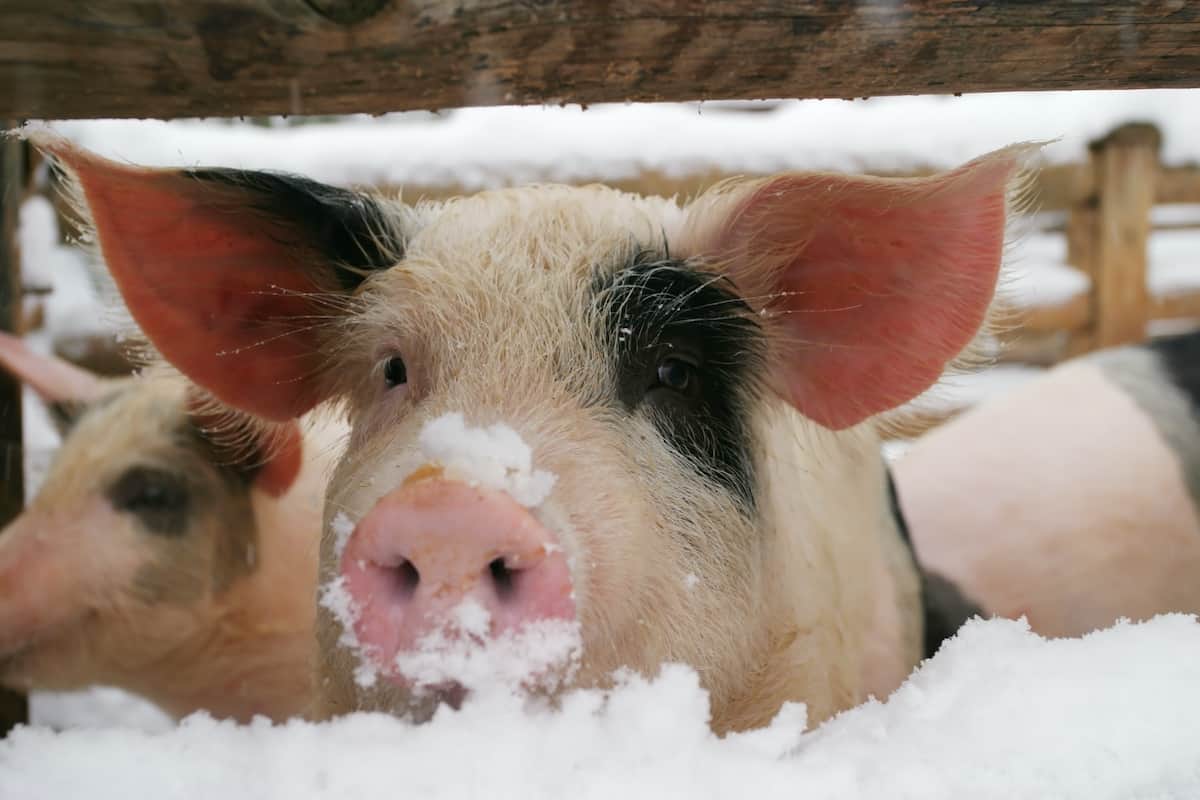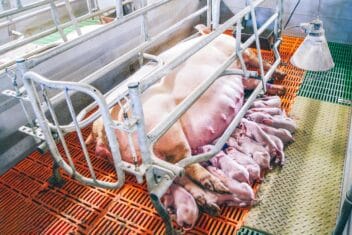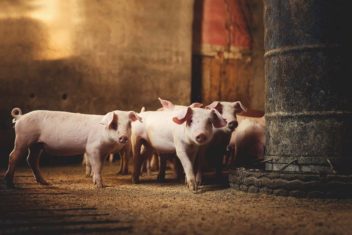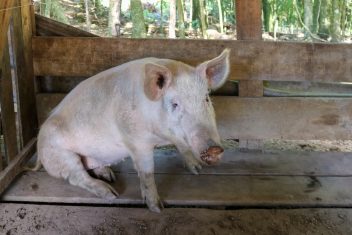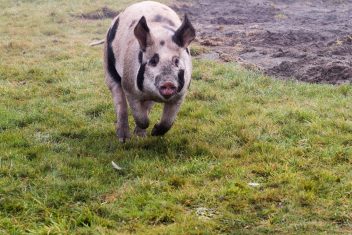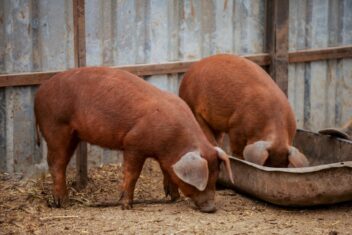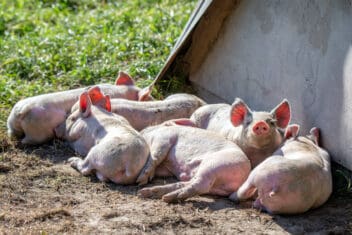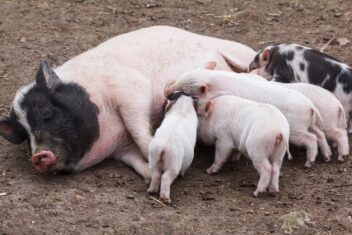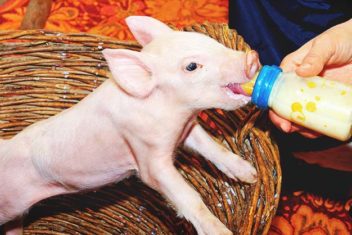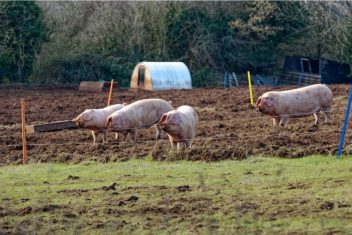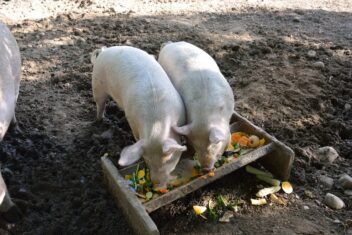Pigs in a blanket is a yummy, adorable appetizer – but there’s no reason to wrap your backyard pigs in blankets this winter. In fact, most pigs do just fine without any kind of supplemental heat at all throughout the winter months.
That said, there are some special considerations that need to be taken into account when you are raising pigs in the winter.
Pigs are pretty hardy creatures, and in all my years of raising pigs, we’ve never had any issues with the cold. That’s really saying something, too, when you consider that where I live, it regularly gets down to temperatures well below freezing!
Most people raise their pigs during the spring, summer, and fall months only. However, there are a few good reasons to consider raising pigs during the winter. Fortunately, this is something that is relatively easy to do – provided that you have the right skills, equipment, and knowledge.
Here are some tips on how to care for pigs in the winter months. It doesn’t matter where you live or how cold it gets.
Tips for Caring for Pigs in the Winter
1. Prevent Drafts
The first step to raising pigs in the winter is to check on the conditions in your barn. Ventilation is fine and highly recommended. This should be above the heads of your pigs, ideally at the peaks and louvers of the barn. Make sure any space down low is draft-proof to prevent the chilling winter wind from getting inside the barn.
Do a thorough inspection before it gets cold and check for spots where you can see daylight. You may need to fill in gaps and cracks with caulk or other sealants to keep things tight. As a side benefit, this will also prevent rodents from getting inside and snacking on your pigs’ feed.
2. Provide Lots of Fresh, Clean Bedding
Bedding is absolutely essential at all times of the year, but especially during the winter. Make sure your pigs remain well-bedded at all times, ideally with fresh, clean material like straw or hay. They will make their own nests to stay warm. In fact, it is not uncommon to venture out to our barn in the dead of winter and find a pig burrowed beneath several feet of hay!
3. Raise Multiple Pigs
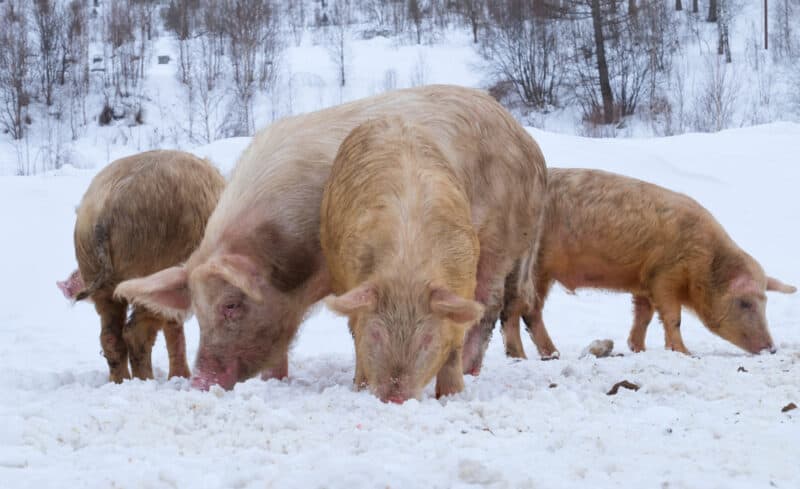
Whenever possible, consider raising more than one pig together. This will provide them with the social interaction they so desperately need and want. It will also help them stay warm. We affectionately refer to our pigs, when they are sleeping in their barn, as a “pile o’ pork.”
That’s because they pile up on each other to stay warm when the wind really gets to driving and the temperatures plummet.
Pigs are naturally social creatures. They will rely on each other for comfort and warmth when it’s cold. Consider raising a few if you plan on doing so during the winter months especially.
4. Other Housing Considerations to Make
You do not need to put a heater in your barn. I don’t care what kind of livestock you are raising.
As long as your barn or other housing facilities are clean, well-ventilated, insulated, and stocked with fresh bedding at all times, a heater is not necessary.
In fact, putting a heater in your barn can cause other problems for your animals. They will be poorly acclimated to outdoor temperatures when they do go outside (or when there is a power outage). It increases the likelihood of fire, too.
5. Increase Feed Allotments
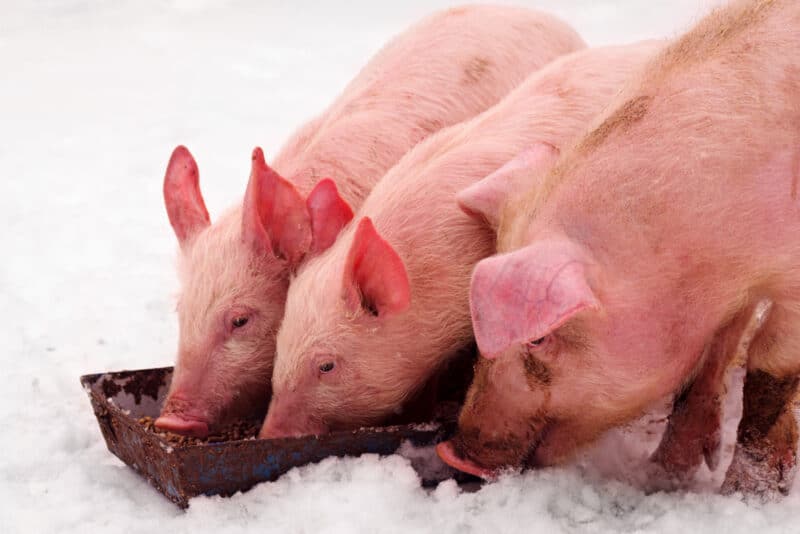
Whatever you were feeding your pigs during the summer, up it in the winter. It’s hard to give an exact ration that should be provided. This will vary depending on the activity level, breed, age, and health of your pig. However, in the winter your pigs are going to be burning more calories trying to stay warm. Make sure you fill in those nutritional gaps.
6. Be Wary of Winter Farrowing
Farrowing is always a fun time on the farm, but do everything you can to make sure this doesn’t happen during the coldest months of the year.
Newborn piglets are incredibly susceptible to cold, wet weather, even when they’re inside a barn. Yes, you can hang heat lamps. However, these increase the likelihood of fire. Piglets are often hesitant to climb beneath them.
If you artificially breed your pig, time it so that she won’t farrow during the winter. If you keep a boar for breeding, separate him from your sow. That way, you don’t have to worry about any “accidents” happening.
However, accidents do happen – and if they do, plan accordingly. Make sure your farrowing sow has plenty of warm, fresh bedding and provide supplemental heat in the form of lamps, heaters, and mats for your piglets.
Just be sure to watch them like a hawk, as barn fires are the most common during winter months when these heating elements are being used.
Make sure you check all wiring, outlets, and other facilities before winter, too. If possible, have an electrician inspect your barn to make sure everything is good to go.
7. Mind the Lack of Light
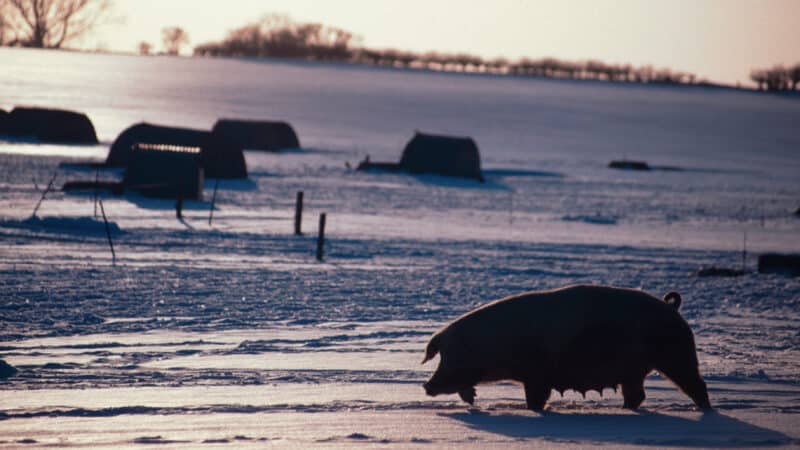
A lack of light can affect the feeding and sleeping habits of your pigs, as it likely does with you during the winter months. You may need to add some supplemental light to your barn to keep everyone healthy.
Make sure this is hung high and tight where your pigs can’t reach it and knock it down. Trust me, they will try.
Our breeding sow has a fondness for chewing on wires and cords, something we learned very early on in the game.
8. Don’t Neglect the Water
Pigs like to play in their water – if you’ve ever raised pigs, you probably already know this. They will happily flip their water troughs and make an unholy mess of their living quarter.
They don’t care what time of the year it is.
Watering pigs in the summer with a barrel equipped with a nipple drinker is by far the easiest way to water pigs. However, this isn’t always possible in winter, when waterers freeze solid (and so do the nipples). You have a few options. You can attach a waterer to the wall, where your pigs can’t flip it. Refill it twice a day to make sure there is water despite the freeze.
You can also put a heater in a barrel, then attach the barrel to the wall, and attach nipple drinkers. Just make sure the wall you choose is well-insulated so that this barrel doesn’t freeze solid, too.
Either way, your waterer needs to be 2 things: freeze-proof, and flip-proof.
9. Consider Your Pig Breed
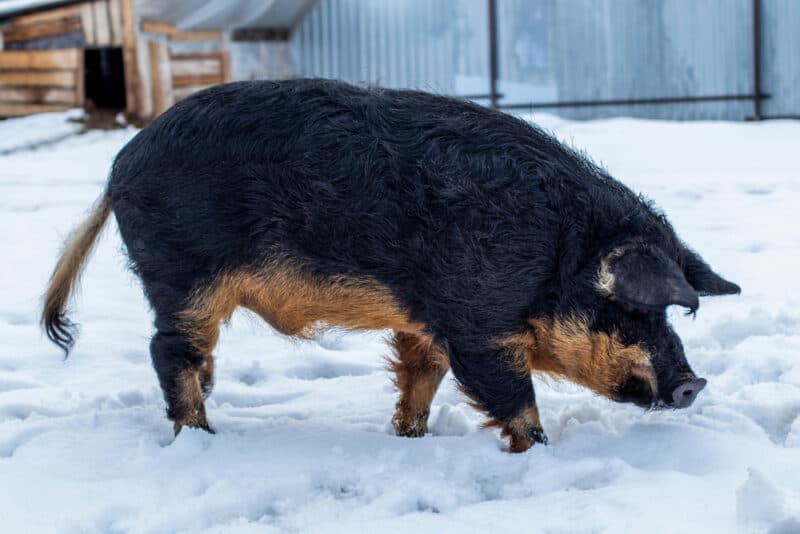
Some breeds of pigs simply perform better in extreme cold. Heritage breeds almost always do better than non-heritage pigs, as they were bred to survive extreme swings in temperatures. Some good options to consider include Berkshires, Tamworths, Yorkshires, Large Blacks, and Durocs.
10. Manure Management
As I mentioned earlier, manure management is essential year-round, but especially during the winter. Do your best to keep the barn mucked out and filled with fresh bedding. You can allow the bedding to compost in a “deep litter” style system. This will actually increase the temperature in your barn as the material decomposes.
However, you do still need to add lots of fresh bedding on a regular basis for this system to work. Otherwise, it will become filthy in a hurry!
Why Should You Keep Pigs During Winter?
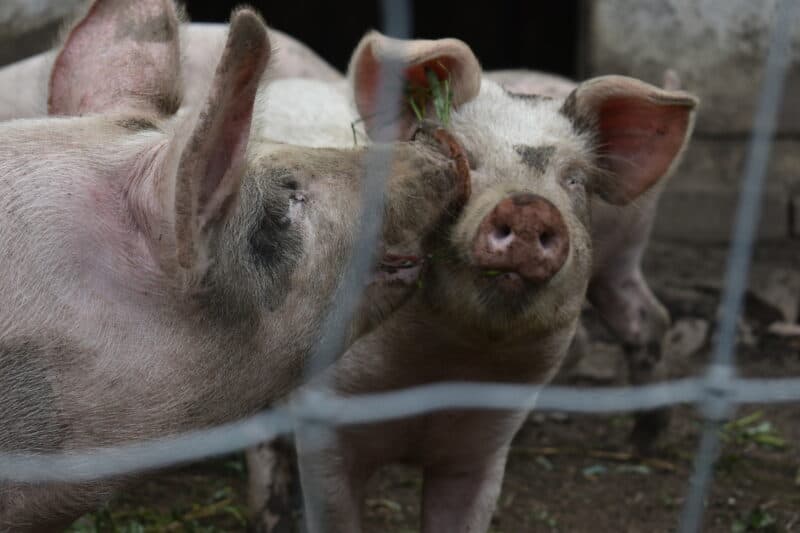
Piglets like these are often cheaper to buy in the fall, instead of the spring.
1. Breeding Sow
There are a few key reasons why you might want to raise pigs during the winter months. I have always found it easier to raise pigs in the spring, summer, and fall.
However, the way we currently run our farm necessitates raising pigs every month of the year.
We only have a large herd from about April until November. From December through March, the coldest months on our farm, we only have one breeding sow. That way, we don’t have nearly as many pigs to deal with. There are some drawbacks to keeping just one, though, of course.
The breeding sow, of course, is necessary so that we have piglets in the spring. We artificially inseminate our sow so we do not keep a boar. However, this is one option you might consider, too.
Keeping a breeding sow throughout the year is a good way to save money on raising pigs. You won’t have to pay the upfront cost of buying piglets and you can sell extra piglets that you don’t plan to raise. We have run the numbers, and for us, this makes the most economical sense.
2. Cheaper Piglets
However, even if you don’t plan on keeping a sow, there is one other good reason to raise pigs during the winter months.
In most cases, sows can be bred twice per year – meaning they will have a spring litter and a fall litter. Spring litters are very easy to sell – everybody wants to raise piglets in the summer! However, fall litters are not so easy to sell, since nobody wants to deal with hauling feed and water out to a pig pen during the coldest months of the year.
Therefore, piglets are not only easy to find for sale in the fall, but they also tend to be incredibly cheap. If you have the motivation and infrastructure necessary to raise pigs in the winter, it’s a great way to save money on your overall cost of pork production.
Should Pigs Be Kept Indoors or Outside In Winter?
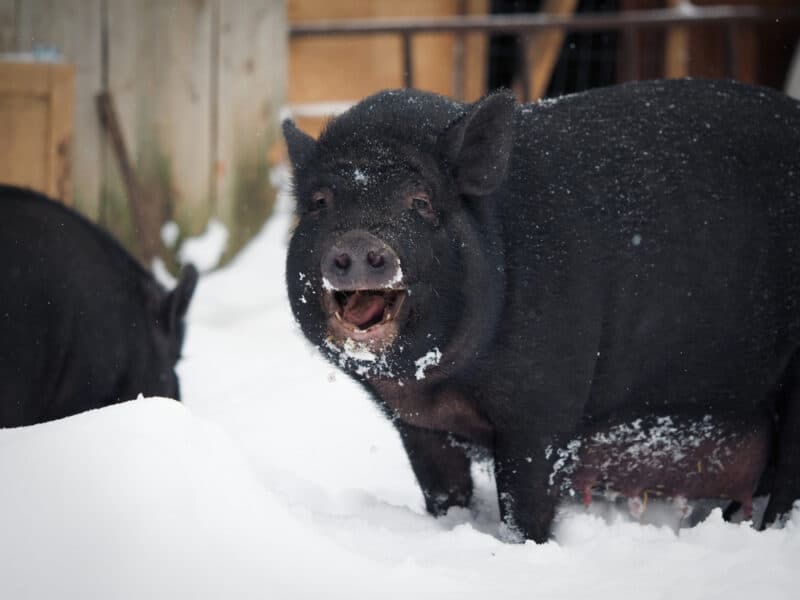
Now that you know the reasons to keep pigs during the winter, it’s time to make a major decision – will you raise your pigs indoors or outside (or a hybrid of the two) during the winter?
We have done it both ways. Personally, I recommend a hybrid. If you are able to provide your pigs with a bit of fresh air from time to time – but also access to a nice, warm barn come nightfall – you will have far fewer issues to contend with.
Not only will there be less manure inside a barn for you to shovel out, but you also won’t have to worry about things like internal parasites and obesity quite as much. When in doubt, exercise and fresh air can cure a lot of potential ailments!
If you are going to provide your pig with access to outdoor space in the winter, don’t worry too much about the snow. Your pig (or pigs) won’t go outside when the weather is downright nasty but will venture out on the warmer days.
Snow removal often is not necessary with larger pigs (they’ll plow right through on their own) but if you want to make a nice gesture, shovel out a path from the barn to help your pigs get started.
You can also keep pigs indoors during the winter, but make sure you put manure management at the top of your weekend chore list. Things will get nasty in there in a hurry, and the buildup of manure will only lead to problems for you (especially if it freezes). Be proactive in dealing with manure and make sure your barn is well-ventilated.
Pigs can also be raised outside during the winter, but you need to be mindful of how you are doing this. Where I live, it is very challenging to raise a pig 100% outside during the winter months. We raised one pig just through December one year (we were having her slaughtered at a USDA facility and could not get a date until a few weeks before Christmas).
That was not ideal, as it just so happened to be a year when our first heavy snow (multiple feet) came in October and it remained cold until she went to market. We had no available indoor space to house her, so we kept her well-bedded under an overhang until she was ready to go.
Although she did fine, the weather only got colder and I wouldn’t have wanted to keep her outside any longer.
If you must raise pigs outside during the winter months with no indoor sleeping space, you’re going to want to mind the tips on how to care for pigs in winter above very carefully, particularly in regards to bedding and keeping multiple pigs together. In some parts of the country, it may just not be possible to keep a pig entirely outside, so do keep that in mind.
Keep Your Pigs Warm This Winter
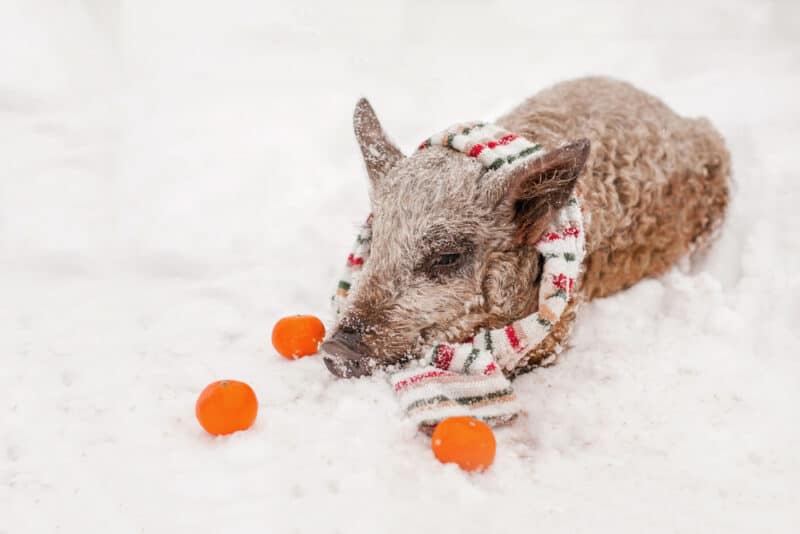
Raising a healthy herd of pigs in the winter months comes down to following the same management procedures you would follow during the warmer months of the year. However, you will need to be a bit more vigilant.
Interact with your pigs every single day, even if you have them set up on automatic feeder and waterer systems. That way, you can stay informed and up-to-date on any potential issues, ideally before they become issues at all. You’ll be able to notice health issues as they arise and also detect problems with your housing (for example, frozen waterers or flooded pens).
By being vigilant and attentive to your pigs, you’ll raise healthy, happy pigs that thrive all 12 months of the year. Stay warm!
